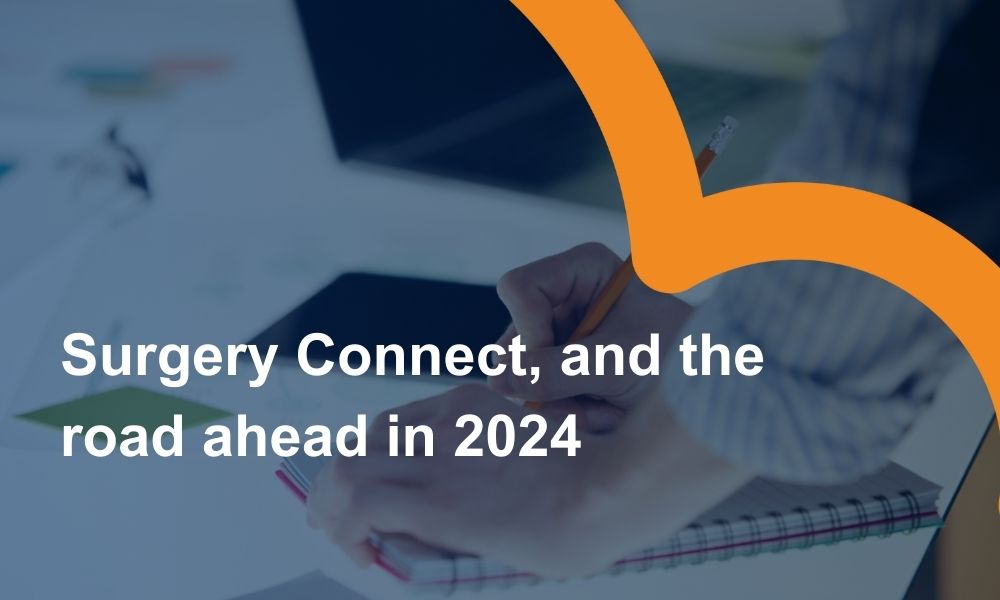It’s an exciting time for us all at X-on Health as we look at how Surgery Connect has developed in 2023 and what is to come in 2024!
It was pleasing this year to see the modern general practice access recovery plan and we fully support the objectives it is aiming to achieve. However, we have been adjusting one of the diagrams from the document, sorry! At X-on Health, we do not see phone calls as a separate communication channel. Not anymore.

Cloud-based telephony is a fully digital channel in its own right and when applied correctly, it is the backbone of a well-rounded communication system. Voice communication is a universal access method that removes all digital inclusion concerns. It’s also the cornerstone of human interaction, nuances, emotions, and tones are conveyed making it an extremely rich communication channel. In the last GP survey, 83% of people said they booked an appointment by phone. This figure will (and should) go down over time, but it shows for now how important the phone is for access to primary care in 2024.
An average-sized practice currently receives around 10,000 phone calls per month, which is a huge volume to deal with. To relieve pressure on GP surgeries, particularly around the “8am rush”, we need to lower that call volume. We do not want more phone calls, we want to help reduce overall call volume leaving voice communication open for the right people at the right time. We have several development work streams that will help reduce the telephone volume, and are excited about sharing more as the year progresses.
We’ve been discussing the links between phone/voice channels and online consult forms for a while now. We have some friends who are specialists in the area of online consultation, and who are open to collaboration.
As things stand today, surgeries can use X-flow, our easy-to-use call flow editing tool, to connect their Surgery Connect phone system and their online consult tool. However, in 2024 we’ll be aiming to do more and go further in this area. We’ll be starting to integrate online consult systems into Surgery Connect to aid general communication with patients. We will also be exploring methods of collecting data about the patient during a phone call, to automatically populate the consultation request or other systems.
Excitingly, we start the year with our appointment Check and Cancel feature in pilot stage, and due to be released soon. This automated feature could free up over 5% of all calls. That equates to approximately 500 fewer calls per month for an average surgery.
Throughout 2023, we invested in our Product Development team by introducing 3 new staff, taking the number of software developers at X-on Health to 14. It was also great to see the Product Team increase interaction with our users throughout 2023. Let me extend a huge thanks to those surgeries who volunteered as pilot sites as we released new features into the system. The feedback we received from them, and all our users, is a massive part of our product development cycle as we seek to get the most useful products out to our community.
In December, our Development team held a hackathon event to explore the latest technologies and how they can be used within the context of Surgery Connect. It was incredible to see what they all came up with, and how technology around a simple phone call can now be used.
One team took voice calls, then transcribed them into text, and created summary notes using AI that could potentially be saved as a consultation. But the winning team went a step further with this and could translate calls to/from different languages, including sentiment analysis, all during a live phone call!

We’ll be taking this forward as a project in 2024 as we explore transcribing and AI further.
It’s exciting to think how this will progress in 2024, but we’re keen that the excitement of the new technology doesn’t get in the way of delivering useful outcomes for primary care, and it’s all done in a clinically safe way. We’ll be starting with utilising this around voicemail transcribing and quickly iterating on this to look at simple dictation and summary notes on phone calls.
If that wasn’t enough, another new project coming up this year is our waiting room dialler. We can see the frustration of Clinicians around the administration of trying to contact patients via the phone. The Phonebar appointment list goes some way in addressing this with multiple communication methods per patient, automatic attempt recording, and SMS all patient features (all available right now). We are going further here and planning a system to automatically reach out to the next patient towards the end of the previous call so they are lined up immediately to talk to the Clinician. No more manual dialling, missed calls, and time spent listening to ringing tones. All with SNOMED coding back to the clinical system too.
The final area to highlight is data analytics and a new level of insight into how telephony is working at a surgery, PCN and ICB level. We’re hoping to highlight the demand that is placed on primary care and also help with improving access for patients. Below is 3 years of telephony data for an average-sized practice.

We know that some simple and fundamental things can be done using Surgery Connect to help drive down the volume of calls. But the key takeaway for us is just that the pressure and demand placed on primary care is relentless. We hope we can help to ease just some of that through the technology Surgery Connect offers analysis of the data, and high levels of help and support along the way.
If you haven’t already explored our Academy, I suggest that you do so, there are some fantastic resources in there to help you make the most of your system.

